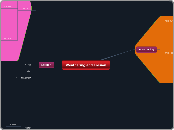Weathering and Erosion
Weathering
More surface area; more weathering
Break down of rock over tiime
Chemical
Oxidation
Rust!
Acid reactions
Dissolves
Mechanical
Physical; into smaller peices
Disintegrates; no change in composition
Frost wedging
water gets in
water frezes, expands
Freeze and thaw cycles
Exfoliation and unloading
Rock weathers away
Less weight and pressure
Breaks into sheets and slabs
Organic activity
Roots; animals
Erosion
Glacier
Description
parallel grooves; scratched and polished
Rate of melting = Rate of moving
Huge rock conveyor belts of ice
Type
Continental
Large; spread out like a pancake (flat suface)
Valley or Alpine
small; in between valleys
Moraines
Dark bands: Rocks
Usualy on the outer edge
Terminal
Rock and debris at the furthest point the glacier has reached
Medial
In the middle of the glacier
Landforms
Fingerlakes
Giant, long, deep, glacial grooves; makes lakes
Till
Pile of debris left behind; unsorted
Erratics
Large rocks; unrelated placement
Drumlins
Mounds and hills of tills
Kettle lakes
ice melt in own hole
Fjord
U-shaped valley filled with water
Waves
Wind
Mass Movement
Water
Runoff
What affects runoff?
The intensity and duration of rainfall
The water content of soil
Slope of land
Vegetation
Stream devlopment
Over time, continuos hill erosion leads to the devlopment of a stream
stream = any channelized flow of water
Types depend on shape, speed, volume of water.
Longitudinal Profile-the side view fom head to mouth.
Gradient
slope of stream
steep at head; flat at mouth
V-shaped land
Young streams
Ground water
Subtopic
